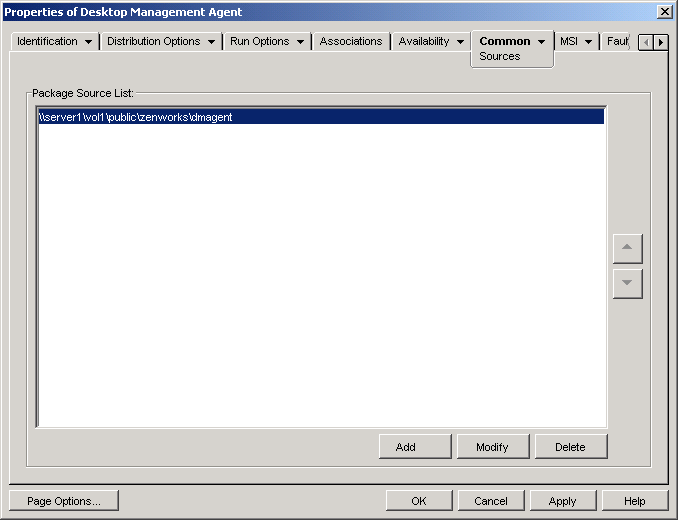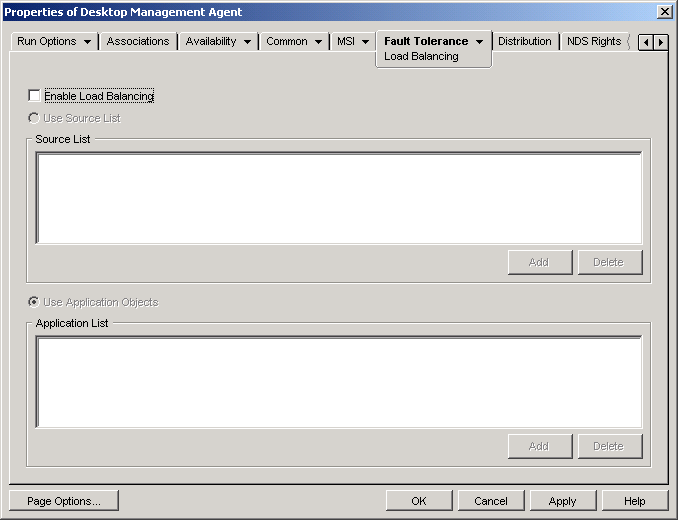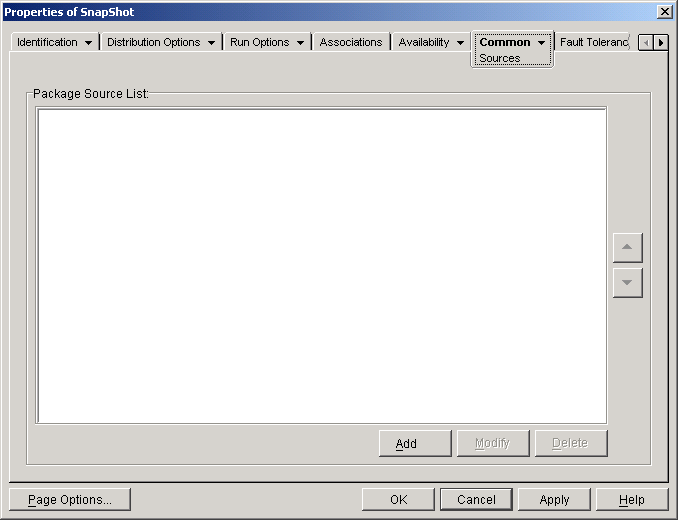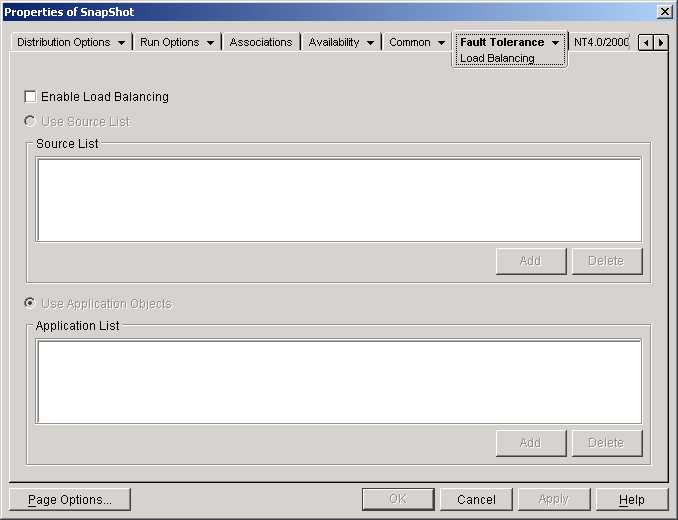36.2 Setting Up Load Balancing
Distributing an application to many users at the same time can cause delays with the distribution. To reduce the possibility of delays, you can spread the workload across multiple servers by establishing additional installation packages on each of those servers. How you set up load balancing depends on whether the application is an MSI application or a simple/AOT/AXT application, as explained in the following sections:
ZENworks Desktop Management does not provide load balancing for Web applications or terminal server applications.
36.2.1 Setting Up Load Balancing for MSI Applications
You establish load balancing for an MSI application by having multiple installation packages available at different server locations. During distribution, if the first source is busy, Application Launcher attempts to distribute from an alternate source.
To set up load balancing for an MSI application:
-
Create the additional MSI installation packages in the server locations you want.
-
In ConsoleOne, right-click the MSI Application object for which you want to establish load balancing, then click to display the Application object's property pages.
-
Click the tab > to display the Sources page.

By default, the Sources page displays the source location that was specified when the MSI Application object was created.
-
Click , specify the source path for an MSI installation package, then click to add the additional source to the list.
-
Repeat Step 4 until you've added all available sources.
For load balancing, the order in which the sources are listed does not matter. Application Launcher randomly selects the source location.
If you are also using this list for fault tolerance, the list determines the order in which sources are used. For more information, see Section 36.1.1, Setting Up Fault Tolerance for MSI Applications.
-
Click the tab > to display the Load Balancing page.

-
Select the check box to turn on the option.
-
Click to save your changes.
36.2.2 Setting Up Load Balancing for Simple or AOT/AXT Applications
You establish load balancing for a simple application or an AOT/AXT application by having multiple installation packages at different source locations. During distribution, if the application's first source is busy, Application Launcher attempts to distribute from an alternate source.
When setting up load balancing for an application, you can link directly to additional installation packages or you can link to additional Application objects that have been created using the installation packages. For example, you want to set up load balancing for App1, whose installation package is located at \\server1\vol1\public\zenworks\app1. You create three additional source locations:
- \\server2\vol1\public\zenworks\app1
- \\server3\vol1\public\zenworks\app1
- \\server4\vol1\public\zenworks\app1
You can define each of the additional installation packages as sources for App1, or you can create three new Application objects using each of the installation packages and then have App1 link to the three new Application objects.
Defining each of the additional installation packages as sources for App1 has the advantage of requiring configuration of only one Application object. Regardless of which installation package is used, the App1 object's distribution settings are applied.
Defining additional Application objects using the installation packages enables you to have different Application object configuration settings for each installation package.
To set up load balancing for a simple application or an AOT/AXT application:
-
Copy the additional installation packages to the server locations you want.
-
(Conditional) If you plan to create Application objects for each of the additional installation packages so that you can link to the Application objects, create the Application objects. If necessary, refer to Section 28.2, Configuring the Application in eDirectory.
-
In ConsoleOne, right-click the Application object for which you want to establish load balancing, then click to display the Application object's property pages.
-
(Conditional) If you are using installation packages only (no Application objects for them), define the installation packages as additional sources for the application. To do so:
-
Click the tab > to display the Sources page.

-
Click , specify the source path for an installation package, then click to add the additional source to the list.
-
Repeat Step 4.b until you've added all available sources.
-
-
Click the tab > to display the Load Balancing page.

-
Fill in the following fields:
Enable load balancing: Select this option to enable load balancing. The other load balancing options are available only if this option is enabled.
Use source list: Select this option to have Application Launcher use a list of sources for load balancing. You must have already created at least one installation package source (see Step 4).
To add a source to the Source List, click , browse to and select the source, then click .
To remove a source, select the source from the Source List, click .
Use application list: Select this option to have Application Launcher use Application objects for load balancing. You must have already created additional Application objects for the application, with the installation package being stored on a different server or volume than this application (see Step 2).
To add an Application object to the Application List, click , browse to and select the Application object, then click .
To remove an Application object from the list, select the Application object, then click .
-
Click to save your changes.